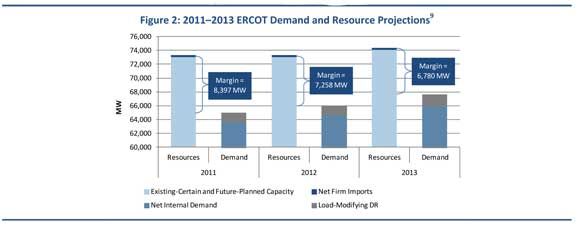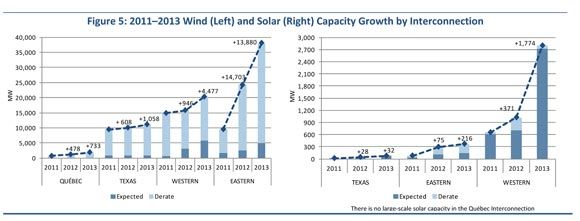As the temperature rises, so does the need for electricity, primarily to fuel the air conditioners so many of us love to crank up as the weather heats up.
Most regions of the U.S. have plenty of generation capacity to meet the requirements of blasting ACs. And then there’s Texas, and to a lesser extent, Southern California.

Texas’ electricity reserves are expected to be below target levels for a second year straight, while California could face concerns if there are extreme weather events, according to the U.S. Energy Information Administration.
In Texas, the grid operator will have a reserve margin of 12.88, percent according to North American Electric Reliability Corporation's 2013 Summer Short-Term Reliability Assessment, lower than the 13.75 percent target for the state’s grid operator, ERCOT.

ERCOT got a little lucky last year, with a relatively mild summer. But if luck doesn’t strike twice, Texas could be faced with emergency alerts and some very high prices, as the cap on prices for the days of peak electricity use has been raised significantly this year.
The high prices are meant to incent new generation, but generation takes years to build. Texas is also badly in need of robust demand response programs, but it has been a slow slog to make enough changes to the market to bring significant load -- especially from the homes that drive summer peaks -- into demand response programs.
In Southern California, the situation is less dire but not ideal. The region is relying on imported energy because of the prolonged outage of the San Onofre Nuclear Generation Station (SONGS) that will now be closed for good. Unlike Texas, however, Southern California has met the constraints with “significant refinements” to demand response programs, according to the NERC report, as well as installing more capacity resources. But now that the Associated Press is reporting the plant’s operator, Southern California Edison, is permanently closing the troubled nuclear plant, Southern California will have to find other ways to replace the 2,200 megawatts that SONGS provided.
Renewable energy will help to some degree, especially in Southern California. In the Western Interconnection, more than 1,700 megawatts of new solar capacity was added in 2012, nearly three times the amount included from the summer before.



